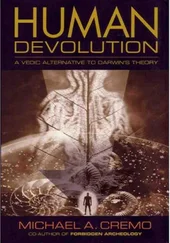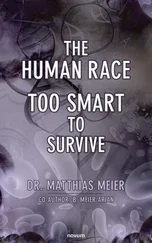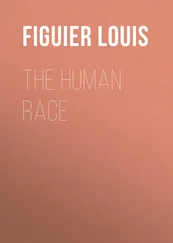Michael Cremo - Forbidden Archeology - The Hidden History of the Human Race
Здесь есть возможность читать онлайн «Michael Cremo - Forbidden Archeology - The Hidden History of the Human Race» весь текст электронной книги совершенно бесплатно (целиком полную версию без сокращений). В некоторых случаях можно слушать аудио, скачать через торрент в формате fb2 и присутствует краткое содержание. Год выпуска: 1992, ISBN: 1992, Издательство: Torchlight Publishing, Жанр: Старинная литература, на английском языке. Описание произведения, (предисловие) а так же отзывы посетителей доступны на портале библиотеки ЛибКат.
- Название:Forbidden Archeology: The Hidden History of the Human Race
- Автор:
- Издательство:Torchlight Publishing
- Жанр:
- Год:1992
- ISBN:9780892132942
- Рейтинг книги:4 / 5. Голосов: 1
-
Избранное:Добавить в избранное
- Отзывы:
-
Ваша оценка:
- 80
- 1
- 2
- 3
- 4
- 5
Forbidden Archeology: The Hidden History of the Human Race: краткое содержание, описание и аннотация
Предлагаем к чтению аннотацию, описание, краткое содержание или предисловие (зависит от того, что написал сам автор книги «Forbidden Archeology: The Hidden History of the Human Race»). Если вы не нашли необходимую информацию о книге — напишите в комментариях, мы постараемся отыскать её.
Forbidden Archeology: The Hidden History of the Human Race — читать онлайн бесплатно полную книгу (весь текст) целиком
Ниже представлен текст книги, разбитый по страницам. Система сохранения места последней прочитанной страницы, позволяет с удобством читать онлайн бесплатно книгу «Forbidden Archeology: The Hidden History of the Human Race», без необходимости каждый раз заново искать на чём Вы остановились. Поставьте закладку, и сможете в любой момент перейти на страницу, на которой закончили чтение.
Интервал:
Закладка:
In Chapter 4, we discuss a category of implements that we call crude paleoliths. In the case of eoliths, chipping is confined to the working edge of a naturally broken piece of stone. But the makers of the crude paleoliths deliberately struck flakes from stone cores and then shaped them into more recognizable types of tools. In some cases, the cores themselves were shaped into tools. As we have seen, crude paleoliths also turn up along with eoliths. But at the sites discussed in Chapter 4, the paleoliths are more dominant in the assemblages.
In the category of crude paleoliths, we include Miocene tools (5 – 25 million years old) found in the late nineteenth century by Carlos Ribeiro, head of the Geological Survey of Portugal. At an international conference of archeologists and anthropologists held in Lisbon, a committee of scientists investigated one of the sites where Ribeiro had found implements. One of the scientists found a stone tool even more advanced than the better of Ribeiro’s specimens. Comparable to accepted Late Pleistocene tools of the Mousterian type, it was firmly embedded in a Miocene conglomerate, in circumstances confirming its Miocene antiquity.
Crude paleoliths were also found in Miocene formations at Thenay, France. S. Laing, an English science writer, noted: “On the whole, the evidence for these Miocene implements seems to be very conclusive, and the objections to have hardly any other ground than the reluctance to admit the great antiquity of man.”
Scientists also found crude paleoliths of Miocene age at Aurillac, France. And at Boncelles, Belgium, A. Rutot uncovered an extensive collection of paleoliths of Oligocene age (25 to 38 million years old).
In Chapter 5, we examine very advanced stone implements found in unexpectedly old geological contexts. Whereas the implements discussed in Chapters
3 and 4 could conceivably be the work of human precursors such as Homo erectus or Homo habilis, given current estimates of their capabilities, the implements of Chapter 5 are unquestionably the work of anatomically modern humans.
Florentino Ameghino, a respected Argentine paleontologist, found stone tools, signs of fire, broken mammal bones, and a human vertebra in a Pliocene formation at Monte Hermoso, Argentina. Ameghino made numerous similar discoveries in Argentina, attracting the attention of scientists around the world. Despite Ameghino’s unique theories about a South American origin for the hominids, his actual discoveries are still worth considering.
In 1912, Ales Hrdlicka, of the Smithsonian Institution, published a lengthy, but not very reasonable, attack on Ameghino’s work. Hrdlicka asserted that all of Ameghino’s finds were from recent Indian settlements.
In response, Carlos Ameghino, brother of Florentino Ameghino, carried out new investigations at Miramar, on the Argentine coast south of Buenos Aires. There he found a series of stone implements, including bolas, and signs of fire. A commission of geologists confirmed the implements’ position in the Chapadmalalan formation, which modern geologists say is 3–5 million years old. Carlos Ameghino also found at Miramar a stone arrowhead firmly embedded in the femur of a Pliocene species of Toxodon, an extinct South American mammal.
Ethnographer Eric Boman disputed Carlos Ameghino’s discoveries but also unintentionally helped confirm them. In 1920, Carlos Ameghino’s collector, Lorenzo Parodi, found a stone implement in the Pliocene seaside barranca (cliff) at Miramar and left it in place. Boman was one of several scientists invited by Ameghino to witness the implement’s extraction. After the implement (a bola stone) was photographed and removed, another discovery was made. “At my direction,” wrote Boman, “Parodi continued to attack the barranca with a pick at the same point where the bola stone was discovered, when suddenly and unexpectedly, there appeared a second stone ball. . . . It is more like a grinding stone than a bola.” Boman found yet another implement 200 yards away. Confounded, Boman could only hint in his written report that the implements had been planted by Parodi. While this might conceivably have been true of the first implement, it is hard to explain the other two in this way. In any case, Boman produced no evidence whatsoever that Parodi, a longtime employee of the Buenos Aires Museum of Natural History, had ever behaved fraudulently.
The kinds of implements found by CarlosAmeghino at Miramar (arrowheads and bolas) are usually considered the work of Homo sapiens sapiens. Taken at face value, the Miramar finds therefore demonstrate the presence of anatomically modern humans in South America over 3 million years ago. Interestingly enough, in 1921 M. A. Vignati discovered in the Late Pliocene Chapadmalalan formation at Miramar a fully human fossil jaw fragment.
In the early 1950s, Thomas E. Lee of the National Museum of Canada found advanced stone tools in glacial deposits at Sheguiandah, on Manitoulin Island in northern Lake Huron. Geologist John Sanford of Wayne State University argued that the oldest Sheguiandah tools were at least 65,000 years old and might be as much as 125,000 years old. For those adhering to standard views on North American prehistory, such ages were unacceptable.
Thomas E. Lee complained: “The site’s discoverer [Lee] was hounded from his Civil Service position into prolonged unemployment; publication outlets were cut off; the evidence was misrepresented by several prominent authors . . . ; the tons of artifacts vanished into storage bins of the National Museum of Canada; for refusing to fire the discoverer, the Director of the National Museum, who had proposed having a monograph on the site published, was himself fired and driven into exile; official positions of prestige and power were exercised in an effort to gain control over just six Sheguiandah specimens that had not gone under cover; and the site has been turned into a tourist resort. . . . Sheguiandah would have forced embarrassing admissions that the Brahmins did not know everything. It would have forced the rewriting of almost every book in the business. It had to be killed. It was killed.”
The treatment received by Lee is not an isolated case. In the 1960s, anthropologists uncovered advanced stone tools at Hueyatlaco, Mexico. Geologist Virginia Steen-McIntyre and other members of a U.S. Geological Survey team obtained an age of about 250,000 years for the site’s implement-bearing layers. This challenged not only standard views of New World anthropology but also the whole standard picture of human origins. Humans capable of making the kind of tools found at Hueyatlaco are not thought to have come into existence until around 100,000 years ago in Africa.
Virginia Steen-McIntyre experienced difficulty in getting her dating study on Hueyatlaco published. “The problem as I see it is much bigger than Hueyatlaco,” she wrote to Estella Leopold, associate editor of Quaternary Research. “It concerns the manipulation of scientific thought through the suppression of ‘Enigmatic Data,’ data that challenges the prevailing mode of thinking. Hueyatlaco certainly does that! Not being an anthropologist, I didn’t realize the full significance of our dates back in 1973, nor how deeply woven into our thought the current theory of human evolution has become. Our work at Hueyatlaco has been rejected by most archaeologists because it contradicts that theory, period.”
This pattern of data suppression has a long history. In 1880, J. D. Whitney, the state geologist of California, published a lengthy review of advanced stone tools found in California gold mines. The implements, including spear points and stone mortars and pestles, were found deep in mine shafts, underneath thick, undisturbed layers of lava, in formations that geologists now say are from 9 million to over 55 million years old. W. H. Holmes of the Smithsonian Institution, one of the most vocal nineteenth-century critics of the California finds, wrote: “Perhaps if Professor Whitney had fully appreciated the story of human evolution as it is understood today, he would have hesitated to announce the conclusions formulated [that humans existed in very ancient times in North America], notwithstanding the imposing array of testimony with which he was confronted.” In other words, if the facts do not agree with the favored theory, then such facts, even an imposing array of them, must be discarded.
Читать дальшеИнтервал:
Закладка:
Похожие книги на «Forbidden Archeology: The Hidden History of the Human Race»
Представляем Вашему вниманию похожие книги на «Forbidden Archeology: The Hidden History of the Human Race» списком для выбора. Мы отобрали схожую по названию и смыслу литературу в надежде предоставить читателям больше вариантов отыскать новые, интересные, ещё непрочитанные произведения.
Обсуждение, отзывы о книге «Forbidden Archeology: The Hidden History of the Human Race» и просто собственные мнения читателей. Оставьте ваши комментарии, напишите, что Вы думаете о произведении, его смысле или главных героях. Укажите что конкретно понравилось, а что нет, и почему Вы так считаете.












